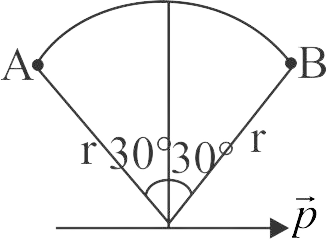359350 An electric dipole consists of two opposite charges of magnitude \(q = 1 \times {10^{ - 6}}C\) separated by \(2.0\;cm\). The dipole is placed in an external field of \(1 \times {10^5}\;N{C^{ - 1}}\). What maximum torque does the field exert on the dipole? How much work must an external agent do to turn the dipole end to end, starting from position of alignment \(\left(\theta=0^{\circ}\right)\) ?
359350 An electric dipole consists of two opposite charges of magnitude \(q = 1 \times {10^{ - 6}}C\) separated by \(2.0\;cm\). The dipole is placed in an external field of \(1 \times {10^5}\;N{C^{ - 1}}\). What maximum torque does the field exert on the dipole? How much work must an external agent do to turn the dipole end to end, starting from position of alignment \(\left(\theta=0^{\circ}\right)\) ?
359350 An electric dipole consists of two opposite charges of magnitude \(q = 1 \times {10^{ - 6}}C\) separated by \(2.0\;cm\). The dipole is placed in an external field of \(1 \times {10^5}\;N{C^{ - 1}}\). What maximum torque does the field exert on the dipole? How much work must an external agent do to turn the dipole end to end, starting from position of alignment \(\left(\theta=0^{\circ}\right)\) ?
359350 An electric dipole consists of two opposite charges of magnitude \(q = 1 \times {10^{ - 6}}C\) separated by \(2.0\;cm\). The dipole is placed in an external field of \(1 \times {10^5}\;N{C^{ - 1}}\). What maximum torque does the field exert on the dipole? How much work must an external agent do to turn the dipole end to end, starting from position of alignment \(\left(\theta=0^{\circ}\right)\) ?

